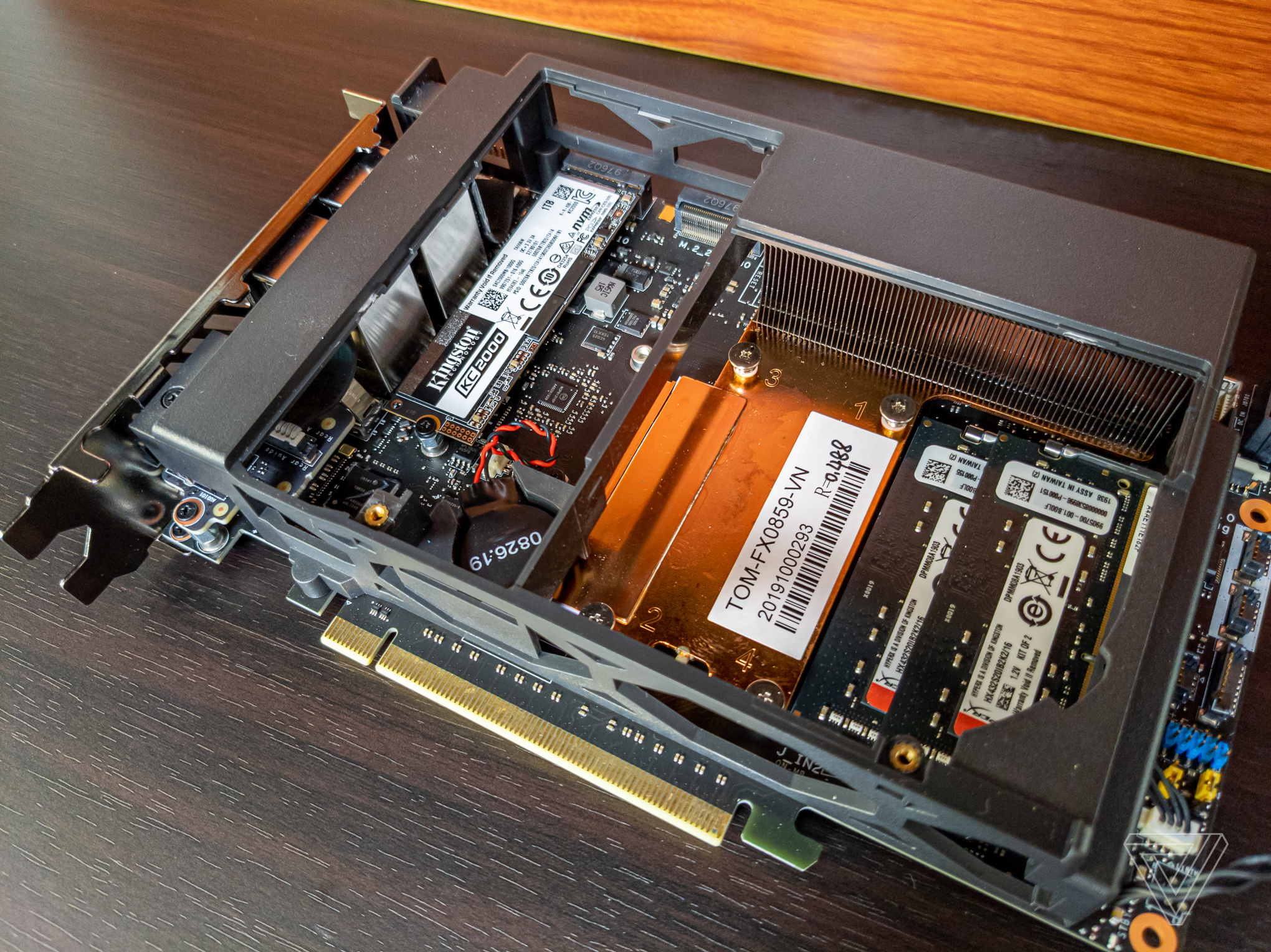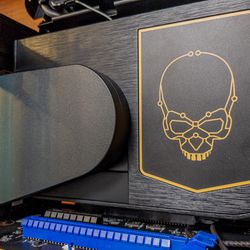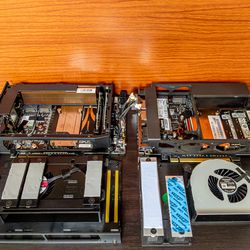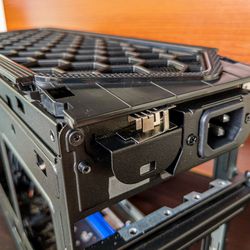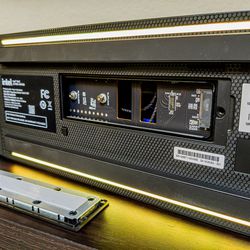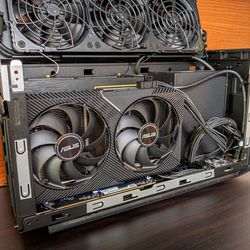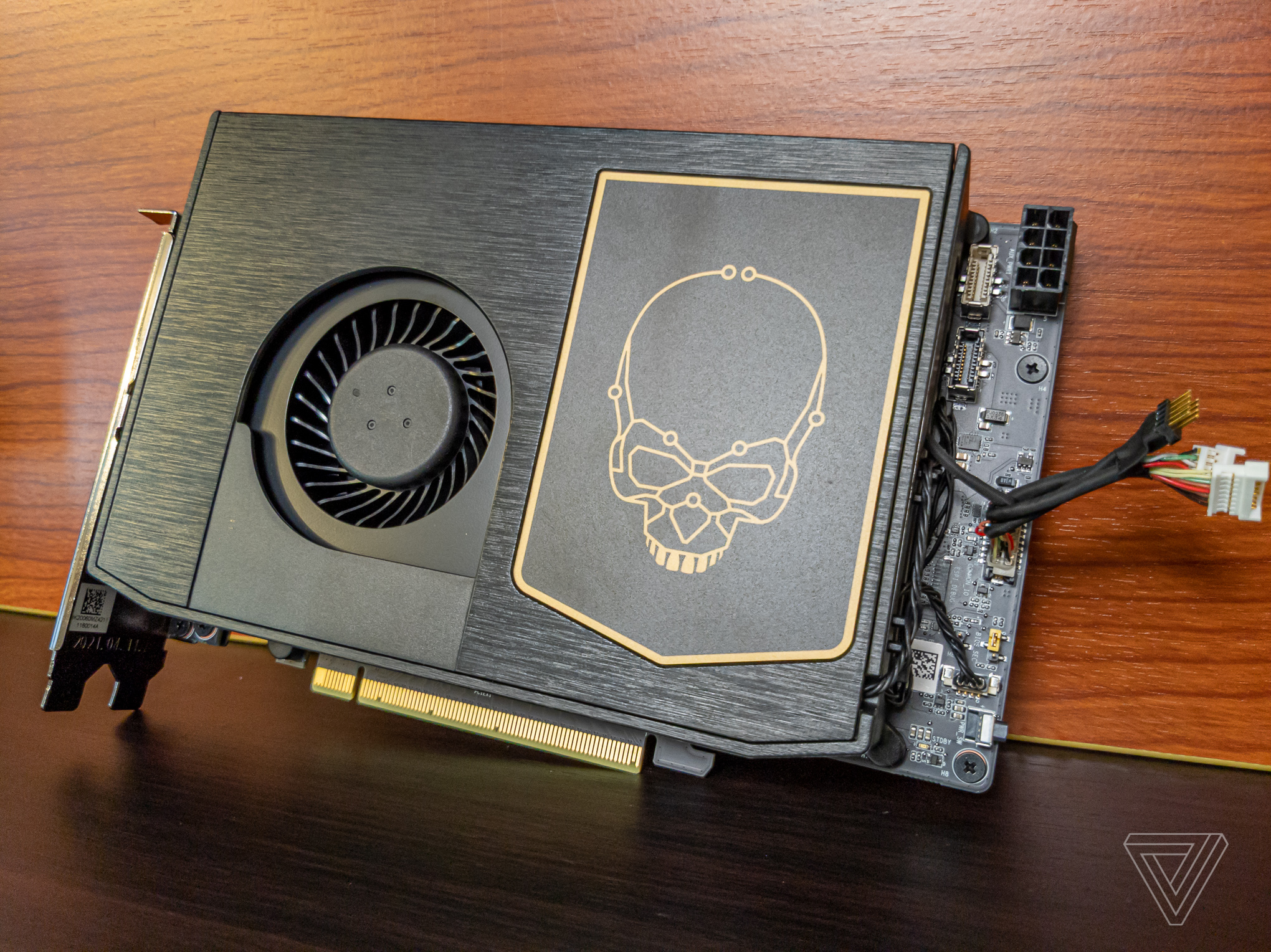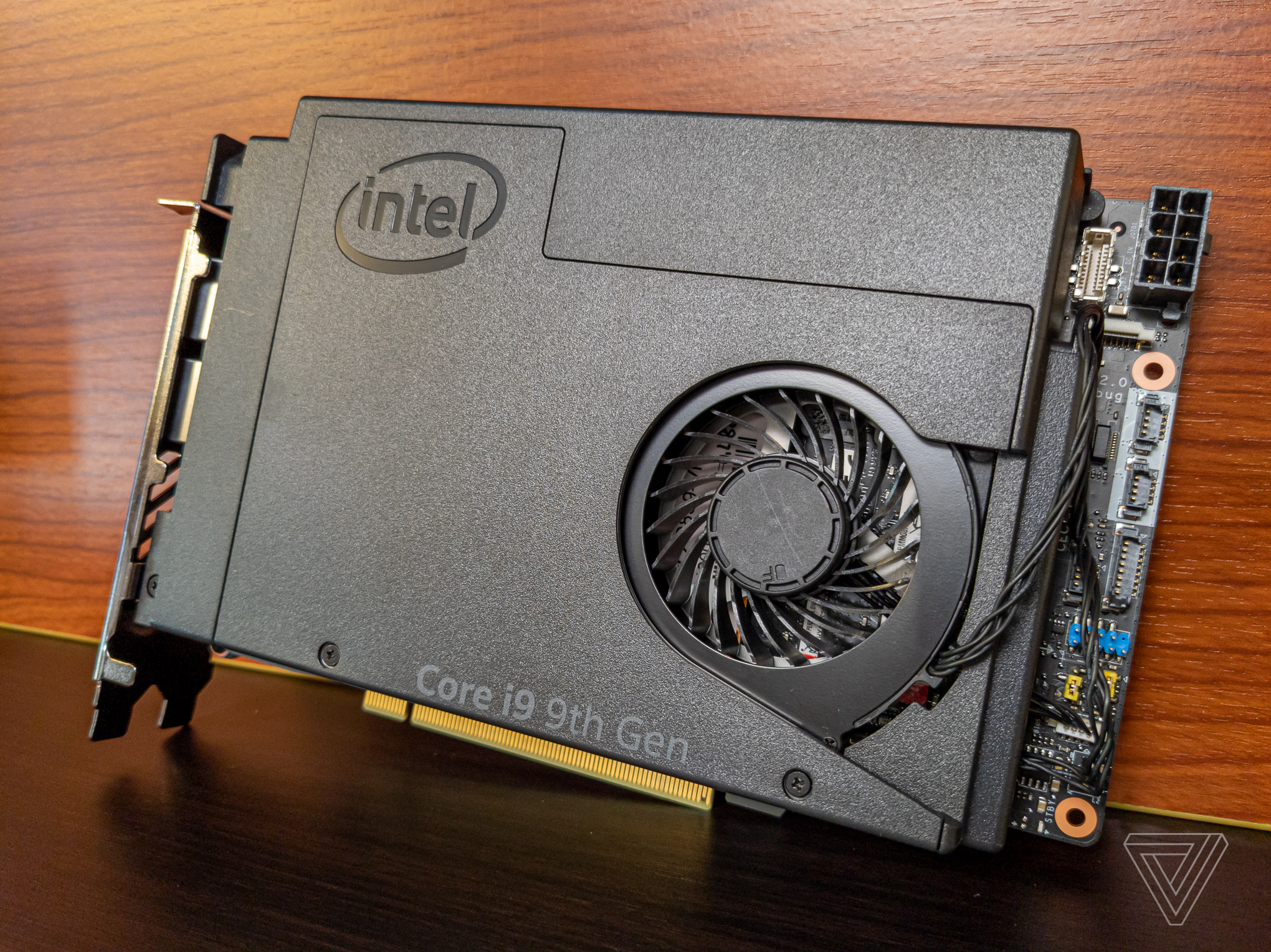Building your own gaming PC is a labor of love. It’s not something that needs to be “easier,” exactly. But from the moment I set a screwdriver to Intel’s new NUC 11 Extreme, aka “Beast Canyon,” I couldn’t help marveling at how brilliant a eight-liter gaming machine can be.
Beast Canyon is Intel’s fourth attempt to design a more compact gaming PC than most gamers could dream of building on their own, and paradoxically, it’s Intel’s biggest chassis yet. Like last year’s Ghost Canyon, it’s attempting to change the way mini-PCs are built with its Compute Element cartridges, which contains a miniaturized motherboard, CPU, memory, storage, and ports you can swap all at once. That way, you can theoretically upgrade your entire system just like you’d upgrade a graphics card, right down to plugging it into a PCI-Express slot. (As I’ll explain, the truth may be a little more complicated.)
Where Ghost was a 5-liter rounded rectangular prism that barely fit an 8-inch-long graphics card, Beast lives up to its name with room for 12 inches of GPU power and an included 650-watt 80+ Gold power supply. It was enough to let me easily fit and sufficiently power one of the most powerful GPUs on the market, the Nvidia GeForce RTX 3080 Ti Founder’s Edition, and it instantly takes this box’s gaming cred far beyond Intel’s previous attempts.
That extra room and power is important, because the upgrade options for a smaller 5-liter box like the Ghost haven’t been looking that hot. While some of Nvidia and AMD’s most powerful cards in prior years have shrunken down to fit tiny cases, the latest batch of RTX 3000 and AMD 6000 series GPUs have gone the opposite direction, with most OEMs opting for oversized cards even compared to Nvidia’s own Founder’s Editions. Last I checked, the most powerful card that will fit the Ghost is EVGA’s RTX 3060 Ti, but the Beast can hold practically every dual-slot graphics card up to a 350W TDP, which just so happens to be where the RTX 3080 Ti tops out anyways.
That might make this 8-liter box one of the smallest competent 4K gaming PCs you can buy — in benchmarks with a pre-production sample of the Core i9-11900KB, I saw the Beast post numbers within a stone’s throw of those my colleague Tom Warren saw when he reviewed the 3080 Ti with his full-size desktop. I can’t call today’s article a full review without lots of testing on a full production board, but based on the numbers I’m seeing in demanding games like Watch Dogs: Legion (which fell just short), most other titles should average over 60 frames per second at 4K with maximum settings sans raytracing.
And while you could probably build a more satisfying, less plasticky and skull-laden rig with boutique cases like the 8.2-liter Louqe Ghost S1 and 7.2-liter Dan A4, most prebuilt mini gaming rigs are far larger, like the 12-liter Corsair One. Perhaps more importantly, I doubt any of them are as effortless to work inside. (I love my 12.7-liter Ncase M1, but even it’s a squeeze sometimes.)
It’s not just the fact that Intel’s modular Compute Element cards let you theoretically swap a bunch of components at once. The internal layout also just makes sense. Instead of having to pivot-pivot-pivot your GPU in and out of the system (or physically remove part of the case, like Intel’s Ghost) you can flip up the entire top of the Beast, triple-fan-array and all, to easily swing a full-size graphics card in and out of the machine. The whole top pivots on a hinge.
The Beast also has perfect-length power cables for its fully modular SFX power supply, special wire channels for its Wi-Fi antennas and fan cables to go just they need to be, and spring-loaded screws with their own retaining clips. It’s not the prettiest build, inside or out, but there’s loads of utility. Also, you can turn off the LED lighting with a dedicated hardware button on the bottom.
:no_upscale()/cdn.vox-cdn.com/uploads/chorus_asset/file/22747179/shollister_210727_4681_0034.jpg)
:no_upscale()/cdn.vox-cdn.com/uploads/chorus_asset/file/22747179/shollister_210727_4681_0034.jpg)
Like previous Intel NUCs, there’s above-average connectivity and expandability, too. Ports include eight full-size USB 3.1 plus additional headers inside the case, two Thunderbolt 4 ports, 2.5Gbps Ethernet, HDMI 2.0, an UHS-II SD card slot, a 3.5mm audio jack, Wi-Fi 6E and Bluetooth 5.2. I just wish one of those USB-C ports was on the front of the case for easier access.
Oh, and there’s room for up 64GB of DDR4 memory and four full-length M.2 slots for your stick SSD storage — three M.2 2280 slots inside the Compute Module and a rare 110mm long M.2 slot with Intel Optane support on the bottom of the case. Two of them can do PCIe NVMe Gen 4 storage, the other two offer your choice of Gen 3 NVMe or SATA 3. Also, the entire NUC chassis is five PCIe slots wide instead of four, giving you room for an additional single-slot card — or the included CPU fan shroud for better ventilation.
Despite all this goodness, I’m not sold on Intel’s Beast, and it comes down to three things: 1) I’m a cheapskate who knows I can generally get more for my money if I don’t lock myself to a single brand, 2) finding any graphics card is an exercise in frustration right now, much less a dual-slot, and 3) I still don’t trust Intel, or anyone, to keep pumping out modules for as long as I’d like to upgrade such a computer.
To be fair, Intel’s doing better than most in that regard. While Alienware broke its upgradable promise entirely with the Area-51m, Intel says the 11th Gen Compute Element will work in last year’s Ghost Canyon — kinda.
The new module “will be able to technically plug into the NUC 9 Extreme Kit, but Intel will not be providing interactive support for that usage model,” a rep tells me, adding that “There were some design decisions necessary that remove certain features such as front panel audio and PCIe Gen4 is also not a certain guarantee.” It’s also not guaranteeing any support for Cooler Master’s NC100 and the Razer Tomahawk, both of which used an NUC Compute Element as their brains.
In case you’re wondering, the Compute Element from my Beast Canyon wouldn’t even power on in the Ghost Canyon, something Intel proactively warned us about, and says will be fixed in production. It fits fine physically, though.
In a more perfect world, maybe Intel, AMD, and other PC giants would join forces to turn this kind of PC into a new industry standard, a replacement for the 20-year-old Mini-ITX motherboard layout that dominates small-form-factor PCs today. That’s what I’d like to see. And maybe a larger, better window to show off my graphics card, instead of mesh with an odd array of square cutouts underneath.
Photography by Sean Hollister


